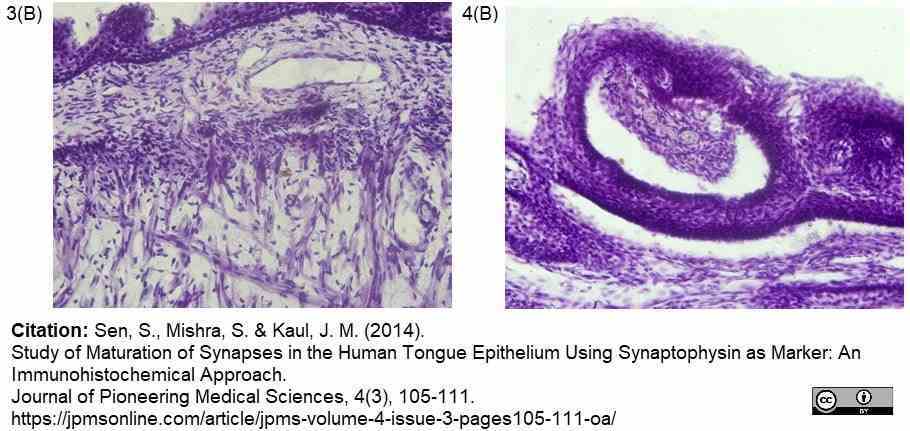Synaptophysin antibody | SY38

Mouse anti Synaptophysin
- Product Type
- Monoclonal Antibody
- Clone
- SY38
- Isotype
- IgG1
- Specificity
- Synaptophysin
| Mouse anti Human synaptophysin antibody, clone SY38 recognizes synaptophysin, also known as Major synaptic vesicle protein p38. Synaptophysin is a 313 amino acid ~38kDa multi pass transmembrane glycoprotein containing a single MARVEL domain. Synaptophysin is characteristic of small neurosecretory vesicles and is also present in neuroendocrine cells of neuronal and epithelial phenotype (UniProt: P08247). Synaptophysin is widely used as a marker for nerve terminals and for differentiating neuroendocrine tumours. Mouse anti Human synaptophysin antibody, clone SY38 has been used to detect synaptophysin in a number of neuronal and adrenal tumours including, pheochromocytomas, ganglioneuromas (Pace et al. 2002), neuroendocrine tumours of epithelial origin; pancreatic islet cell carcinoma, bronchial and gastrointestinal carcinoids and medullary carcinoma of the thyroid (Wiedenmann et al. 1986). |
- Target Species
- Human
- Species Cross-Reactivity
-
Target Species Cross Reactivity Rat Mouse Bovine Western grey kangaroo - N.B. Antibody reactivity and working conditions may vary between species.
- Product Form
- Purified IgG - liquid
- Preparation
- Purified IgG prepared by affinity chromatography on Protein A from ascites
- Buffer Solution
- Phosphate buffered saline.
- Preservative Stabilisers
- <0.1% Sodium Azide (NaN3)
0.5% Bovine Serum Albumin - Immunogen
- Synaptophysin presynaptic vesicles.
- Approx. Protein Concentrations
- 0.05 mg/ml
- Regulatory
- For research purposes only
- Guarantee
- 12 months from date of despatch
Avoid repeated freezing and thawing as this may denature the antibody. Storage in frost-free freezers is not recommended.
| Application Name | Verified | Min Dilution | Max Dilution |
|---|---|---|---|
| Immunohistology - Frozen | |||
| Immunohistology - Paraffin | |||
| Western Blotting |
References for Synaptophysin antibody
-
Leube, R.E. (1995) The topogenic fate of the polytopic transmembrane proteins, synaptophysin and connexin, is determined by their membrane-spanning domains.
J Cell Sci. 108: 883-94. -
Kahle, P.J. et al. (2000) Subcellular localization of wild-type and Parkinson's disease-associated mutant alpha -synuclein in human and transgenic mouse brain.
J Neurosci. 20: 6365-73. -
Thiele, C. et al. (2000) Cholesterol binds to synaptophysin and is required for biogenesis of synaptic vesicles.
Nat Cell Biol. 2: 42-9. -
Spiwoks-Becker, I. et al. (2001) Synaptic vesicle alterations in rod photoreceptors of synaptophysin-deficient mice.
Neuroscience. 107: 127-42. -
González-Jamett, A.M. et al. (2010) The association of dynamin with synaptophysin regulates quantal size and duration of exocytotic events in chromaffin cells.
J Neurosci. 30: 10683-91. -
Grossi, A.B. et al. (2013) Histologic and immunohistochemical classification of 41 bovine adrenal gland neoplasms.
Vet Pathol. 50 (3): 534-42. -
Skripuletz, T. et al. (2013) Astrocytes regulate myelin clearance through recruitment of microglia during cuprizone-induced demyelination.
Brain. 136 (Pt 1): 147-67. -
Etherington, S.J. et al. (2016) Heterochronic neuromuscular junction development in an Australian marsupial (Macropus fuliginosus)
Journal of Zoology. 300 (1): 27-35.
View The Latest Product References
-
Gudi, V. et al. (2017) Synaptophysin Is a Reliable Marker for Axonal Damage.
J Neuropathol Exp Neurol. 76 (2): 109-25. -
Hassan, R. et al. (2019) The prospective role of mesenchymal stem cells exosomes on circumvallate taste buds in induced Alzheimer's disease of ovariectomized albino rats: (Light and transmission electron microscopic study).
Arch Oral Biol. 110: 104596. -
Gingele, S. et al. (2020) Delayed Demyelination and Impaired Remyelination in Aged Mice in the Cuprizone Model.
Cells. 9 (4): 945 -
Hassan, R. et al. (2020) The prospective role of mesenchymal stem cells exosomes on circumvallate taste buds in induced Alzheimer's disease of ovariectomized albino rats: (Light and transmission electron microscopic study).
Arch Oral Biol. 110: 104596. -
Paasila, P.J. et al. (2021) Ground state depletion microscopy as a tool for studying microglia-synapse interactions.
J Neurosci Res. 99 (6): 1515-32. -
Sen, S., Mishra, S. & Kaul, J. M. (2014) Study of Maturation of Synapses in the Human Tongue Epithelium Using Synaptophysin as Marker: An Immunohistochemical Approach.
Journal of Pioneering Medical Sciences, 4(3), 105-111.
Further Reading
-
Wiedenmann, B. et sal. (1991) Synaptophysin. A widespread constituent of small neuroendocrine vesicles and a new tool in tumor diagnosis.
Acta Oncol. 30: 435-40. -
Cavalla, P. and Schiffer, D. (2001) Neuroendocrine tumors in the brain.
Ann Oncol. 12 Suppl 2:S131-4. -
Kasprzak, A. et al. (2007) Selected markers (chromogranin A, neuron-specific enolase, synaptophysin, protein gene product 9.5) in diagnosis and prognosis of neuroendocrine pulmonary tumours.
Pol J Pathol. 58: 23-33.
- RRID
- AB_2286948
- UniProt
- P08247
- Entrez Gene
- SYP
- GO Terms
- GO:0005509 calcium ion binding
- GO:0005215 transporter activity
- GO:0015485 cholesterol binding
- GO:0016188 synaptic vesicle maturation
- GO:0019717 synaptosome
- GO:0030054 cell junction
- GO:0030285 integral to synaptic vesicle membrane
- GO:0048169 regulation of long-term neuronal synaptic plasticity
- GO:0048172 regulation of short-term neuronal synaptic plasticity
- View More GO Terms
- GO:0048499 synaptic vesicle membrane organization
8479-0004
If you cannot find the batch/lot you are looking for please contact our technical support team for assistance.
Please Note: All Products are "FOR RESEARCH PURPOSES ONLY"
View all Anti-Human ProductsAlways be the first to know.
When we launch new products and resources to help you achieve more in the lab.
Yes, sign me up